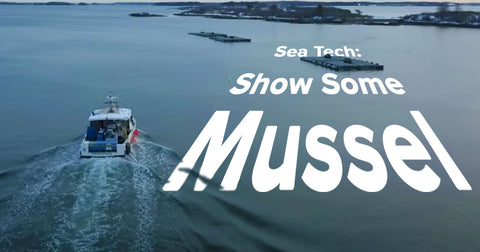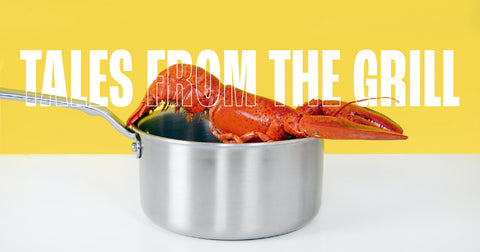The thought might not cross your mind when chowing down on a pile of mussels, but it takes a lot to get those little shellfish from the ocean to your dinner table. Mussel farming sustainably is one challenge without over-fishing. Doing it and making a profit is another challenge altogether.
Food blog Eater took a trip up here to Portland, Maine, to one of our sources for mussels, Bangs Island Mussels, to crack open the surprisingly high-tech process of mussel farming and discover just how they go from the ocean depths to your table. You can watch the full video below.
Nature’s perfect little water filters
First, let’s talk about the awe-inspiring job of a mussel. They don’t realize it, but mussels (and other shellfish) play a crucial role in keeping our waterways clean. They’re essentially tiny but powerful water filters each capable of cleaning several gallons of water per day. Healthy water systems go hand-in-hand with thriving mussel populations.
High-tech world of mussel farming
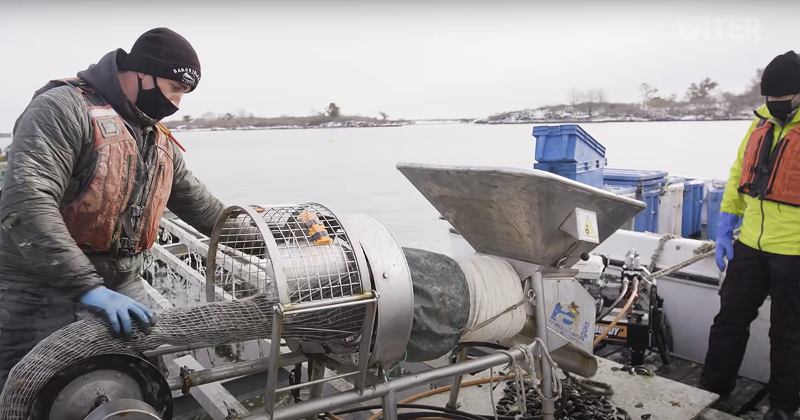
Growing mussels to a size fit for a dinner plate is a two-year process. Bangs Island Mussels built floating, man-made mussel farms off the coast. Here they use what they call “fuzzy ropes” and a cotton sock to create “mussel sausage.” This “sausage” is lowered into the water where mussels byss (attach) onto the ropes and will grow without much fear from predators.
This is an ingenious process, as the cotton biodegrades while the mussels grow, leaving no negative impact on the environment. By the time the mussels are ready to be farmed, the cotton sock has disappeared, the rope is teeming with hundreds of huge mussels, and is acting as a powerful, natural filter for the water all around it.
When the mussels are ready to be farmed, the Bangs Island crew hauls the rope out of the water, separates them, and gets them ready for cleaning and packaging. Mussels that are too small or damaged are returned to the sock machine and sent back into the ocean to await another farming day.
How many pounds per day!?
To make mussel farming profitable, Bangs Island Mussels processes 7,000 pounds per day. That kind of volume is only attainable with some high-tech machinery to help.
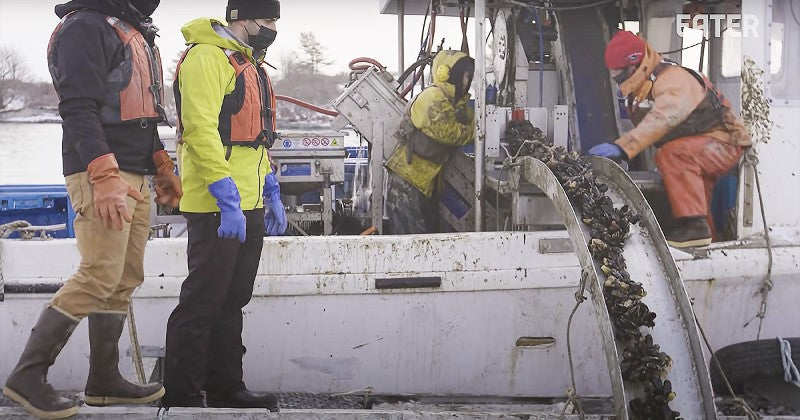
There’s the socking machine we mentioned above. There’s the stripper (pictured above), which helps remove mussels and other sea organisms like sea squirts (you’ll see those squirting in the video) from the fuzzy rope. There’s the “declumper” machine to help separate mussels stuck together. This feeds into the size grader, which weeds out the small mussels from the ones that eventually end up in our bellies.
At the packaging center, the reliance on machinery and tech continues. Machines do the vast majority of the cleaning, weighing, and packaging. As Bangs Island Mussels CEO, Matt Moretti, said, “We could not do this by hand at all.”
One job still requires a personal touch
There is one area where humans still have a consistent presence: inspection. Workers manning a conveyor belt carefully watch and sift through the thousands of mussels to weed out any dead, broken, or highly irregular mussels. But who knows? Maybe someday in the near future machines will be sophisticated enough to do this job too.
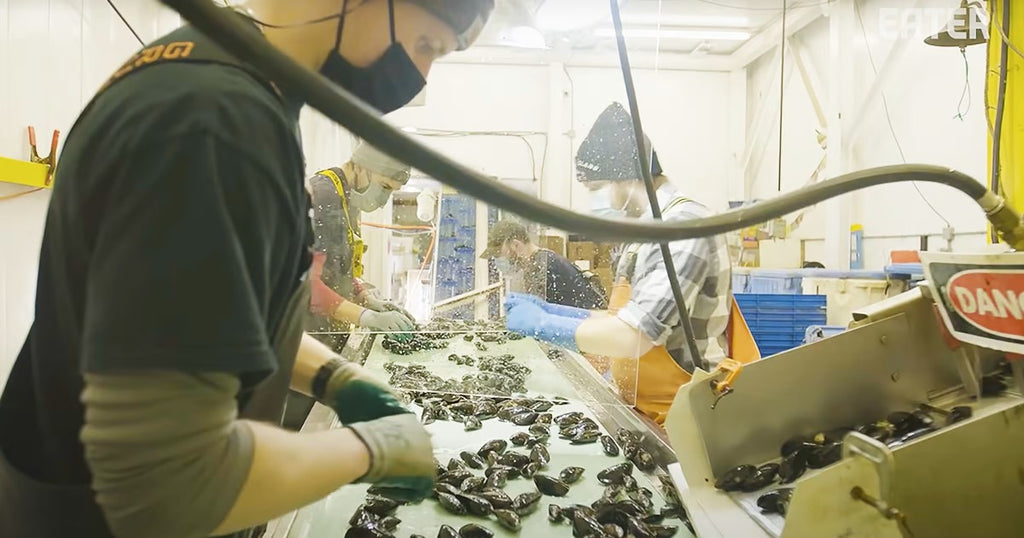
Even in places like the Atlantic Coast, high technology is playing an increased role in our agriculture. Bangs Island Mussels shows it’s possible to embrace technology while also farming sustainably. That’s just one of the reasons we’re proud to partner with them.
Now that you know the process, let’s dig into some mussels at home. Order your Bangs Island Mussels today from Maine Lobster Now. Need help preparing them at home? Read our full How to Cook Mussels guide.
Watch the full Eater video here.

